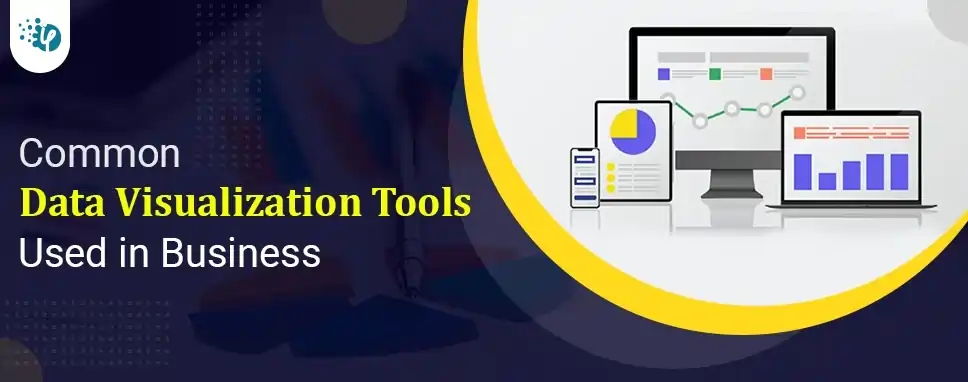How to Do Forecasting in Power BI (Steps & Accuracy Metrics)
Remember our last guide - Power BI forecasting? It revealed things that truly blocks accuracy, both structural and situational. Now it's time to take the next step. Knowing Power...
Listening is fun too.
Straighten your back and cherish with coffee - PLAY !

Human brains process visuals 60,000 times faster than they do text, so it’s no wonder that data visualization plays such a huge role for businesses. Large amounts of data may look like gibberish, but once they are organized into something visual, they make much more sense.
In fact, data visualization can help you create powerful visuals for your marketing while also giving you insight into your target audience, market, company, and so much more. Here are the most important things you should know about data visualization and which tools you can use to visualize your data on the business level.
The data you collect (such as customer behavior data or data from your market analysis) can be organized in datasets which can then be analyzed and used to create visuals representations of this data. The process of creating a visual representation of the data in your dataset is referred to as data visualization.
There are numerous ways in which you can visualize data, so there is virtually no limit when it comes to choosing how you will go about your data visualization. Here are just some of the most common forms in which data can be visualized and presented:
Obviously, this is not an exhaustive list of the ways you can visualize data, but it’s a good starting point. Data visualization shouldn’t be difficult, but it can be challenging if you are a beginner. This is why it’s important to understand why you need it in the first place and how it can help your business.
Shannon Rankin, an expert from the custom writing reviews site Writing Judge, explains it this way, “Data visualization is a process that allows you to better understand the data you have. In other words, it allows you to spot patterns, perform better analysis, make more informed decisions, set realistic objectives, and so on.”
This is precisely why you need data visualization. It’s one thing to have the data, but it’s a completely different thing to be able to use it effectively. By visualizing it, you organize it, structure it, analyze it, and assess it so much better than you would without the visualization. In a way, this process is yet another filter to help you get the most value out of the data you possess.
Moreover, data visualization works for different purposes. You can use it to analyze the market and your competitors, but you can also use it to analyze your target audience. You can also use data visualization to communicate data more effectively between the different departments of your business. In other words, it’s a way for your analysts to explain their findings to other specialists at your company that will, in turn, use these findings to inform their decisions and actions.
Alright, data visualization is important. But why do you need data visualization tools? While data visualization helps you understand data easier, data visualization tools help you visualize this data easier. In other words, both make your life easier even though they work differently and are applied in different ways.
Data visualization tools are exactly what they sound like. They are tools, usually programs or special software, that allow you to visualize your data in different forms (e.g. pie charts, infographics, heat maps). Obviously, there are different tools for different ways to visualize data, but some of these tools are more versatile and can help you work with different formats.
Many data visualization tools have templates that allow you to build on a pre-existing foundation instead of starting from a blank page. Some data visualization tools are more accessible than others. Some of them are simple and some are advanced. In fact, you might actually already have the skills to use some of them. But even if you don’t, you can still learn to use these tools and start utilizing data visualization in your strategy.
One crucial thing you should remember before you start using data visualization, however, is that your visual representation will only be as good as the data itself. Even if you use the best data visualization tools currently available, you could still get poor visualization as a result if you have errors in your data (or if your data is of low quality). Hence, it’s essential that you collect, store, and process data carefully before you start analyzing and visualizing it.
Here are some of the most common simple data visualization tools:
While simple data visualization tools can help you get started, advanced data visualization tools are the ones that will get you to better results. Here are some popular options to try:
All in all, data visualization is definitely crucial for your business to run smoothly and to improve its strategy in different ways. That’s why it’s a good idea to use data visualization tools to help you with this process. Use this article to help you better understand data visualization and start using special tools to aid you with it.

Remember our last guide - Power BI forecasting? It revealed things that truly blocks accuracy, both structural and situational. Now it's time to take the next step. Knowing Power...

It's amazing to see how Data teams today are racing ahead - moving from traditional warehouses to cloud-native platforms, lakehouses, and real-time architectures. But in this rush,...

Think about the last time CTOs spent most of their time fixing old systems. Updates were slow, servers were expensive, and adding new features took time. Now, things have changed....